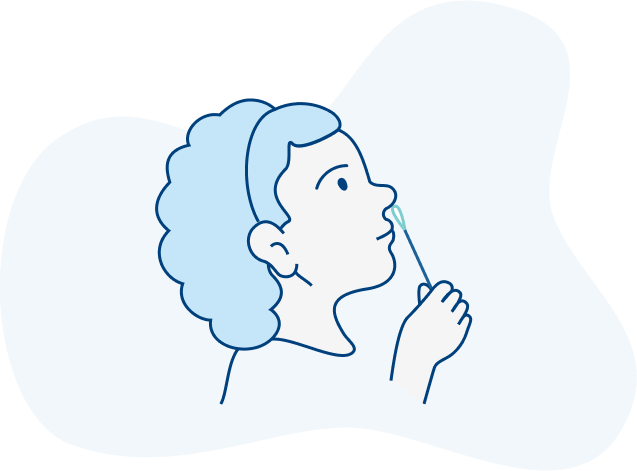School Health Professionals Hub
On Site Pooled Testing
This page is designed to answer the questions we get most frequently from school health professionals. For an overview of the entire program, please refer to our general toolkit at www.CovidEdTesting.com
Click the questions below to jump to the answers
Find others running school testing programs through our peer-to-peer hub.
Hear directly from other school health professionals
Click the image to watch a demonstration on how to swab from a school nurse (2 mins) or enter https://www.youtube.com/watch?v=8fNMg3Bo9Gc&t=19s into your web browser.
“At middle and elementary schools, we have a “traveling” swab station on a cart. Initially we had done swabbing outside on mask breaks but now the weather has made it a little difficult, so we take the cart around to each class and have them come out one by one. At first, we thought this may disrupt learning for too long, but the testing goes quite quickly, and the disruption is minimal. It is helpful to give the teachers a list of who is testing ahead of time in order to help get the kids out of the room and back in.”
“Setting up a drive-thru window: We are very lucky with our current set up, we have managed to make a “drive thru” station at Watertown Middle School. I and the other testing nurse sit inside the cafeteria with windows open to the front of the building. This allows cars to file in and wrap around the horseshoe. We typically have one of our school resource officers out front and they help direct traffic and remind people to blow their nose and sanitize their hands prior to coming to the window. In the event that they don’t have tissues or hand sanitizer, we have our custodian set out a desk and trash barrel in front of the window so people can blow and sanitize outside before walking over to the window. So now they approach the window, we preopen the swab for them, they pull out JUST the swab, circle each nostril 3 times then plop it into the collection tube and we recap it. This way we are ensuring no contamination and their hands aren’t touching the outside of any of the samples.”
What’s the role of nurses in the program?
To support your testing program, it’s important to identify internal, external, or volunteer resources that can take on the responsibilities described in our Identifying Your Testing Team Guide. One individual can take on multiple roles, and in many cases this is recommended. While school nurses tend to make great candidates, a nursing degree or specialized medical training is not necessary to fulfill any of these roles.
At each school district, you need:
Testing Program Manager
At each school, you need:
Testing Coordinator & Software Manager
Pooled Test Observer & Swabber
Follow-Up Test Outreach Lead (not contact tracing)
Follow-Up Test Observer & Swabber
Our Identifying Your Testing Team Guide contains detailed descriptions of each role.
How is the test sample collected?
The nasal swab collected by a sampling technique known as an “anterior nares specimen” that is the lower nasal passage is swabbed. This is a less invasive and more comfortable procedure for the patient than the “deep nasal swab”. It’s sort of like a rapid strep test, but the sample is collected from the nose.
For students in Grade Two and above, It is a self administered test. Cotton swab, 3x around each nostril. Young students in Grade One and below will be swabbed by a school nurse or a trained professional.


